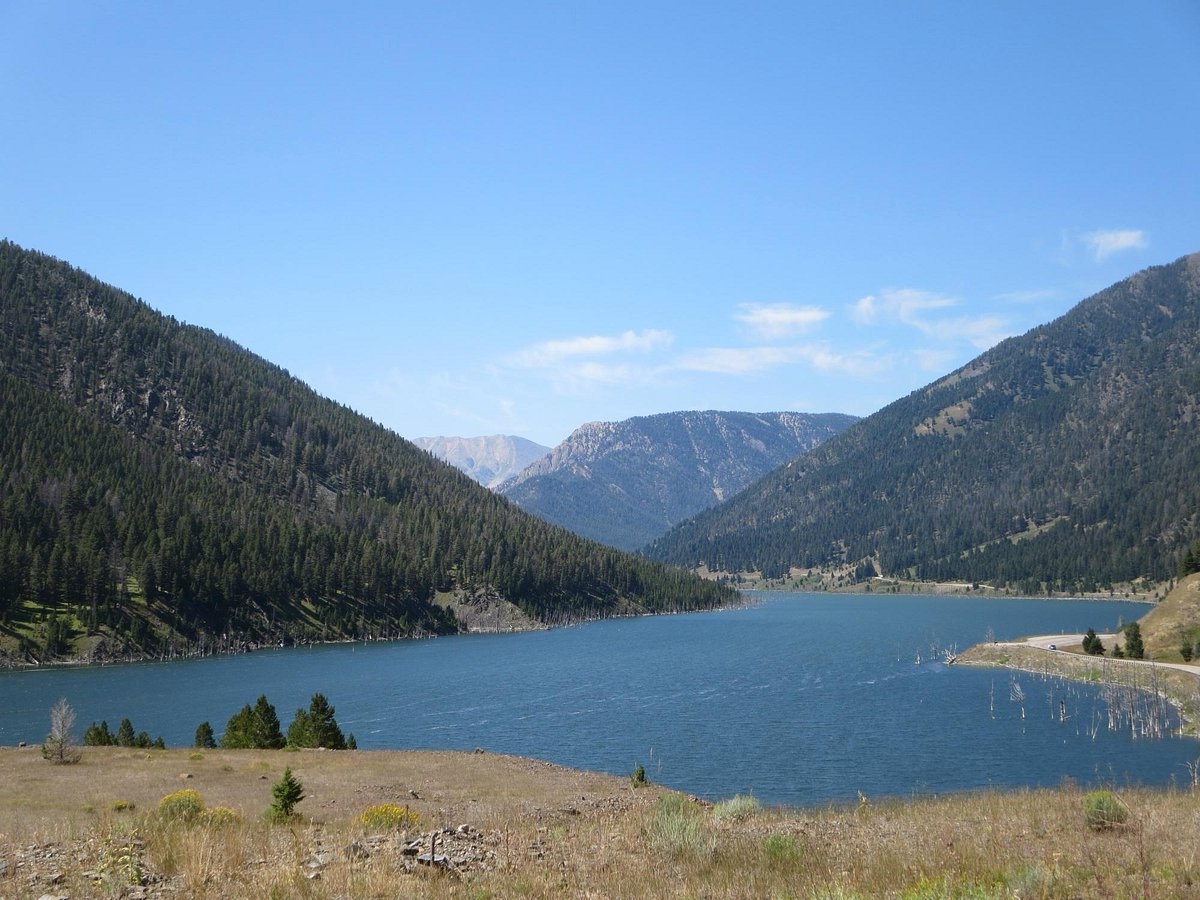Mystery Of Earthquake Lake In Yellowstone

Have you ever heard of Earthquake Lake in Yellowstone? This hidden gem formed after a massive earthquake in 1959. The quake caused a landslide that blocked the Madison River, creating the lake. Today, Earthquake Lake offers a unique glimpse into nature's power. Visitors can explore the area, hike trails, and learn about the event at the visitor center. The lake's eerie beauty, with submerged trees still visible, adds to its mystique. If you're planning a trip to Yellowstone, make sure to include Earthquake Lake on your itinerary. It's a fascinating spot that combines natural beauty with geological history.
The Birth of Earthquake Lake
In 1959, a massive earthquake shook Yellowstone, creating a natural wonder known as Earthquake Lake. This lake, also called Quake Lake, formed when a landslide dammed the Madison River. The event left behind a fascinating landscape and a story worth exploring.
The Earthquake's Impact
The earthquake that created Earthquake Lake was one of the most powerful in the region's history. It reshaped the land and left behind several points of interest.
Hebgen Lake: Before Earthquake Lake, there was Hebgen Lake. The earthquake caused the lake's bed to tilt, creating large waves that flooded the surrounding area.
The Landslide: The quake triggered a massive landslide, moving 80 million tons of rock. This landslide blocked the Madison River, forming Earthquake Lake.
Ghost Trees: As the lake formed, it submerged trees that now stand as eerie reminders of the event. These ghostly trees poke out of the water, creating a hauntingly beautiful scene.
Visiting Earthquake Lake
Exploring Earthquake Lake offers a unique glimpse into nature's power. Several spots around the lake provide excellent views and educational opportunities.
Earthquake Lake Visitor Center: This center offers exhibits about the earthquake and the lake's formation. It's a great starting point for understanding the area's history.
Quake Lake Overlook: For a panoramic view of the lake and the landslide, head to the Quake Lake Overlook. It's an ideal spot for photos and reflection.
Memorial Boulder: Near the lake, a large boulder serves as a memorial to the 28 people who lost their lives in the earthquake. It's a somber but important part of the lake's story.
Wildlife Around Earthquake Lake
The area around Earthquake Lake is teeming with wildlife. The lake and its surroundings provide a habitat for various species.
Bald Eagles: These majestic birds can often be seen soaring above the lake. They nest in the trees around the water, making it a prime spot for birdwatching.
Elk and Deer: The forests and meadows near the lake are home to elk and deer. Visitors might spot these animals grazing or moving through the area.
Fish in the Lake: Earthquake Lake is also a popular spot for fishing. Anglers can find trout and other fish species in the lake's waters.
Hiking and Recreation
For those who enjoy outdoor activities, Earthquake Lake offers several options for hiking and recreation.
Beaver Creek Trail: This trail offers a moderate hike with beautiful views of the lake and surrounding mountains. It's a great way to experience the area's natural beauty.
Boating on the Lake: While motorized boats are not allowed, kayaking and canoeing are popular activities on Earthquake Lake. Paddling across the water provides a unique perspective of the landscape.
Camping Nearby: Several campgrounds near Earthquake Lake offer a chance to stay close to nature. Camping here allows visitors to fully immerse themselves in the area's serene environment.
Geological Significance
Earthquake Lake is not just a scenic spot; it's also a site of geological interest. The lake and its surroundings offer insights into the Earth's dynamic processes.
Fault Lines: The earthquake that created the lake exposed several fault lines. These geological features provide a glimpse into the forces that shape our planet.
Seismic Activity: The area around Earthquake Lake remains seismically active. Scientists study this activity to better understand earthquakes and their effects.
Rock Formations: The landslide and subsequent erosion have created unique rock formations around the lake. These formations tell the story of the lake's dramatic creation.
The Enigmatic Beauty of Earthquake Lake
Earthquake Lake, born from a tragic event in 1959, stands as a testament to nature's power and resilience. This unique spot in Yellowstone offers visitors a chance to witness the aftermath of a massive earthquake that reshaped the landscape. The lake's serene waters, surrounded by remnants of the landslide, create a hauntingly beautiful scene.
Exploring Earthquake Lake provides a mix of history, geology, and natural beauty. The visitor center offers insights into the earthquake's impact, while hiking trails allow for closer views of the area. Whether you're a history buff, nature lover, or just curious, Earthquake Lake is a must-see.
Next time you visit Yellowstone, make sure to include Earthquake Lake in your itinerary. It's a place where you can reflect on the forces that shape our world and appreciate the beauty that emerges from chaos.

